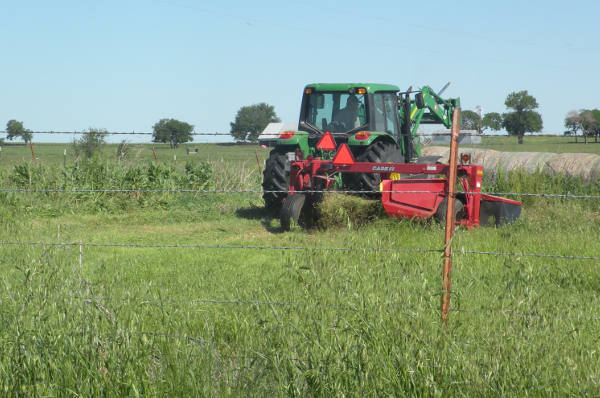
Some producers may be able to start haying Bermuda grass and coastal as much as a couple of weeks early.Producers were forced to drastically reduce the cattle herd or sell out completely in some cases.In other areas, where warm-season grasses were beginning to come on and were in need of fertilizer, the outlook was not so rosy.
April 17, 2012

Many livestock producers continue to make hay while the sun shines, according Texas AgriLife Extension Service reports.
With rains and warmer-than-average weather, cool-season grasses and small grains continued to show rapid growth, according to the reports. Producers throughout the state were taking advantage of the situation to bale as much as they could and rebuild hay supplies depleted in the 2011 drought.
Moreover, with the warm weather pushing maturity of warm-season grasses, producers in his area may be able to start haying Bermuda grass and coastal as much as a couple of weeks early, said Rick Maxwell, AgriLife Extension agent for Collin County, northeast of Dallas.
But it’s sort of a “bittersweet” situation, Maxwell said, for as welcome as the hay is, most producers wish they had enough cattle to take advantage of the greatly improved grazing. As did many in other parts of the state, Collin County producers were forced to drastically reduce the cattle herd or sell out completely in some cases.
“It’s going to be really difficult to buy back in (the cattle market) because of the short supply,” he said. “The demand is there, which means prices are high. It probably will be this way for quite some time.”
AgriLife Extension agents from other parts of the state had similar reports.
“The (dryland) winter wheat crop is growing as if it is being irrigated,” said Rick Auckerman, AgriLife Extension agent for Deaf Smith County, west of Amarillo. “A large majority of the wheat crop this year is going for silage or hay, with little going to grain, with the exception of the seed-wheat going to the various seed men in the area.”
In other areas, where warm-season grasses were beginning to come on and were in need of fertilizer, the outlook was not so rosy.
“Nitrogen fertilizer prices are going through the roof,” said Clint Perkins, AgriLife Extension agent for Wood County, about 100 miles east of Dallas. “Urea is pushing $800 per ton and ammonium nitrate is in very short supply — if you can get it. Hay producers are very worried.”
More information on the current Texas drought and wildfire alerts can be found on the AgriLife Extension Agricultural Drought Task Force website at http://agrilife.tamu.edu/drought/.
You May Also Like



